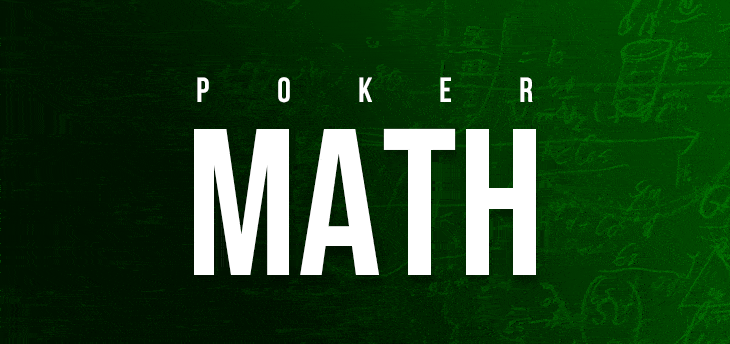Poker Math: Calculate Pot Odds and Expected Value on the Fly

In the exhilarating game of poker, the ability to make informed decisions based on mathematical calculations can mean the difference between triumph and defeat. While many players rely on instinct and intuition, understanding the principles of advanced poker math, particularly pot odds and expected value, can give you a significant advantage over your opponents. In this article, we will dive into the world of poker math, exploring how to calculate pot odds and expected value on the fly. So, grab your calculator and let’s embark on a journey to master the numbers behind the game.
The Power of Pot Odds
Pot odds form the foundation of strategic decision-making in poker. Simply put, pot odds refer to the ratio between the current size of the pot and the cost of a contemplated call. By understanding pot odds, you can assess the profitability of a particular decision, such as calling a bet or making a raise.
Calculating pot odds involves comparing the number of “outs” you have—the cards that can improve your hand—to the size of the pot. For example, if you have four cards to a flush after the flop, and there are $100 in the pot, a $20 bet from your opponent, the pot odds would be 5-to-1 ($100/$20). If the odds of completing your flush are 4-to-1, it would be a profitable decision to call the $20 bet, as the potential reward outweighs the cost.
Mastering pot odds allows you to make calculated decisions based on the potential return on investment, rather than relying solely on intuition or guesswork.

Expected Value: Calculating the Future
While pot odds focus on the current situation, expected value (EV) takes into account the long-term profitability of a decision. EV is a mathematical calculation that considers both the potential gain and the likelihood of achieving that gain.
To calculate EV, you multiply the probability of each possible outcome by the associated value of that outcome and sum them up. For example, if you have a 30% chance of winning a $100 pot and a 70% chance of losing, the expected value of that decision would be $30 (0.30 * $100) – $70 (0.70 * $100) = -$40. A negative EV indicates that, in the long run, the decision is not profitable.
By calculating the expected value of various actions, you can make informed choices that maximize your long-term profitability. This is particularly useful in situations where the immediate pot odds may not appear favorable, but the potential future gains outweigh the current costs.
Crunching Numbers on the Fly
In the fast-paced environment of a poker game, it’s impractical to sit with a calculator and meticulously calculate pot odds and expected value for every decision. To become a master of advanced poker math, you must develop the ability to perform quick mental calculations on the fly.
One technique for calculating pot odds is the “4 and 2 rule.” If you’re on the flop and trying to determine your chances of hitting a draw on the turn or river, you can multiply the number of outs by 2 to get an approximate percentage of hitting your hand by the next card. Multiplying by 4 gives you an estimate of the percentage by the river (multiplying by 4 should only be used when your opponent is all in on the flop). While not exact, this rule provides a useful approximation to aid in your decision-making process.

When it comes to expected value, practice and experience are key. By studying the probabilities of various outcomes and continuously honing your mental math skills, you can develop an intuitive sense of the expected value of different actions. Over time, these calculations will become second nature, allowing you to make swift and accurate decisions at the poker table.
Conclusion
While poker is often portrayed as a game of intuition and chance, the truth is that advanced mathematical concepts play a crucial role in achieving success. By understanding pot odds and expected value, you gain a significant edge over opponents who rely solely on instinct. Calculating pot odds enables you to assess the profitability of your decisions in the immediate moment, while expected value empowers you to make choices that maximize long-term profitability.
So, the next time you find yourself at the poker table, remember to harness the power of advanced poker math. Become a master of pot odds and expected value, and watch as your game reaches new heights. As the great poker player David Sklansky once said, “Successful poker is no different from a successful business or life venture: Get the odds on your side.”
